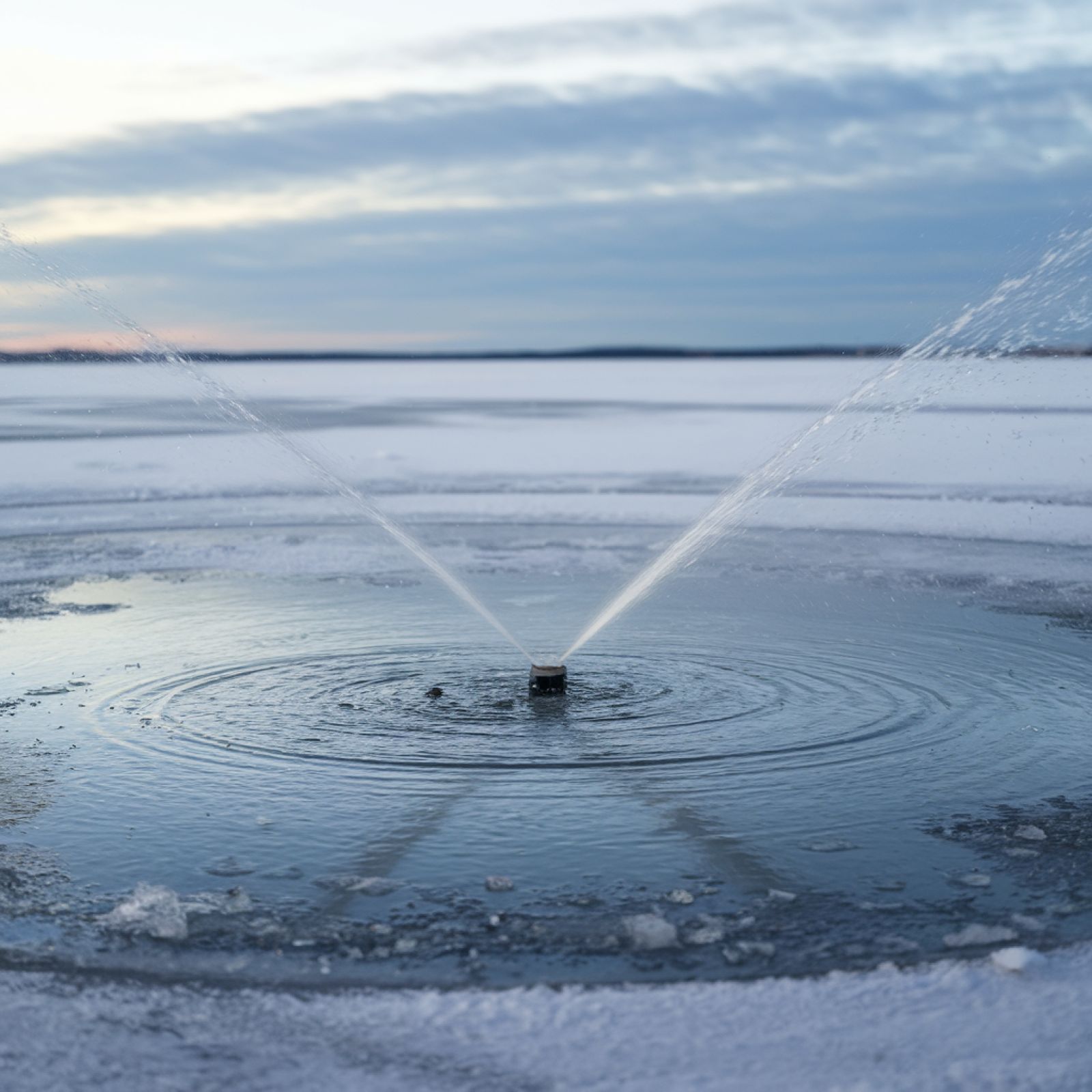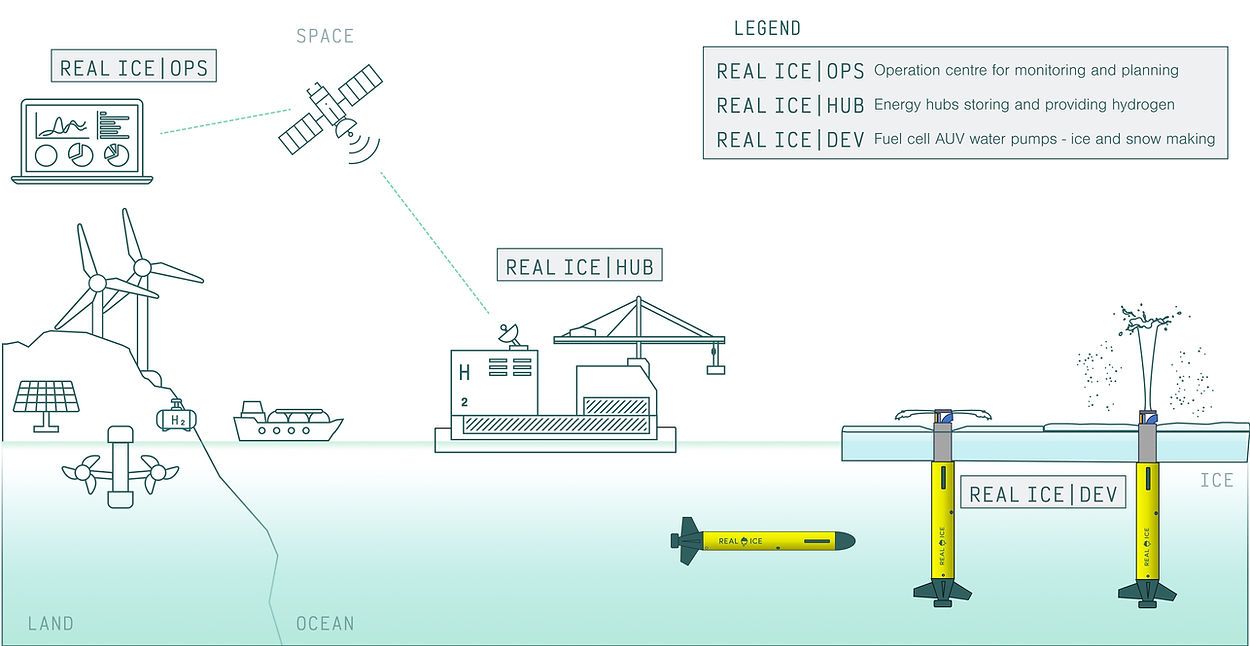This crazy project aims to spray the ice pack to refreeze it
Published by Cédric,
Article author: Cédric DEPOND
Source: NewScientist
Other Languages: FR, DE, ES, PT
Article author: Cédric DEPOND
Source: NewScientist
Other Languages: FR, DE, ES, PT
Follow us on Google News (click on ☆)
Initial trials conducted in northern Canada show surprising results. The ice thickness has increased by 20 inches (50 centimeters) in a few months.

The project is being led by Real Ice, a company specializing in geoengineering. Their technique? Using seawater to reinforce the ice layer. The operation of the ice pack refreezing project relies on a carefully orchestrated strategy, adapted to seasonal variations and involving two complementary techniques: seawater spraying and the use of aerosols. This approach is designed to optimize ice pack thickening while taking fluctuating climatic conditions into account. The process is as follows:
In winter, when temperatures drop significantly, the first step is to use underwater drones that drill into the ice pack, pump seawater, and spray it across the surface. This process exploits the thermal contrast between the water and the cold air. When the water comes into contact with the freezing air, it rapidly freezes, forming an additional ice layer. This phenomenon not only helps increase the ice pack's thickness but also improves its thermal conductivity, thus promoting the formation of ice below the surface. The thicker the ice at the end of winter, the more likely it is to survive the melting season.
In spring and summer, when the ice begins to melt, another technique comes into play: aerosol spraying. These fine particles, made of misted seawater, are projected into the air to create a protective snow layer on the ice pack. This snow covering acts as an insulator, reducing the warming of the underlying ice by reflecting some solar radiation. Additionally, this layer helps limit the accumulation of meltwater on the surface, thus preventing the weakening of the ice pack.
This method has already been tested on Victoria Island, Canada. In collaboration with the Centre for Climate Repair from the University of Cambridge, the team managed to thicken the ice by 20 inches (50 centimeters) in just five months. Furthermore, a new 10-inch (25-centimeter) formation of ice was observed beneath the surface of the ice pack.

However, scaling up this solution remains a challenge. The goal would be to deploy nearly 500,000 underwater drones to cover one million square kilometers of ice pack. The estimated cost is $6 billion per year.
Despite the early optimism, the scientific community remains cautious about the unforeseen effects this intervention could have on the Arctic ecosystem. Some experts are concerned that manipulating the ice pack might disrupt the habitats of many species like polar bears or seals, which rely on the ice to feed. Moreover, artificial refreezing could alter ocean currents, influencing the thermohaline circulation that is essential for global climate regulation. Increasing salinity and adding aerosols to the surface could also disturb marine and atmospheric ecosystems, necessitating further studies before large-scale application.
While this project might slow ice melt, it should not distract from the necessary efforts to reduce greenhouse gas emissions, the true cause of global warming.
What is geoengineering?
Geoengineering refers to a set of technologies aimed at artificially altering the climate to counteract the effects of global warming. These techniques include projects like ice pack refreezing or solar radiation management.
Geoengineering projects, such as the one by Real Ice, seek to directly intervene in natural systems to slow down or reverse climate processes. While promising, they are often controversial because of ecological risks and uncertainties about their long-term effects.
How does thermal conductivity influence ice formation?
Thermal conductivity measures a material's ability to transmit heat. The higher it is, the more easily heat flows through the material. In the case of the ice pack, better thermal conductivity allows cold air to reach the deeper layers of the ice.
When seawater is pumped onto the ice pack's surface, it rapidly freezes. By blocking air bubbles present in the snow, the ice pack's thermal conductivity increases. This speeds up the formation of new ice layers beneath, thereby strengthening the ice pack.
Why is the ice pack essential to climate balance?
The ice pack plays a crucial role in regulating the global climate. It acts like a mirror, reflecting a large amount of solar radiation back into space due to its high albedo. Less absorbed radiation means less warming.
When the ice pack melts, it exposes more ocean, which absorbs more heat. This accelerates the warming of the Arctic, a phenomenon known as polar amplification. The ice melt also disrupts marine currents and the local ecosystem, affecting Arctic wildlife and flora.